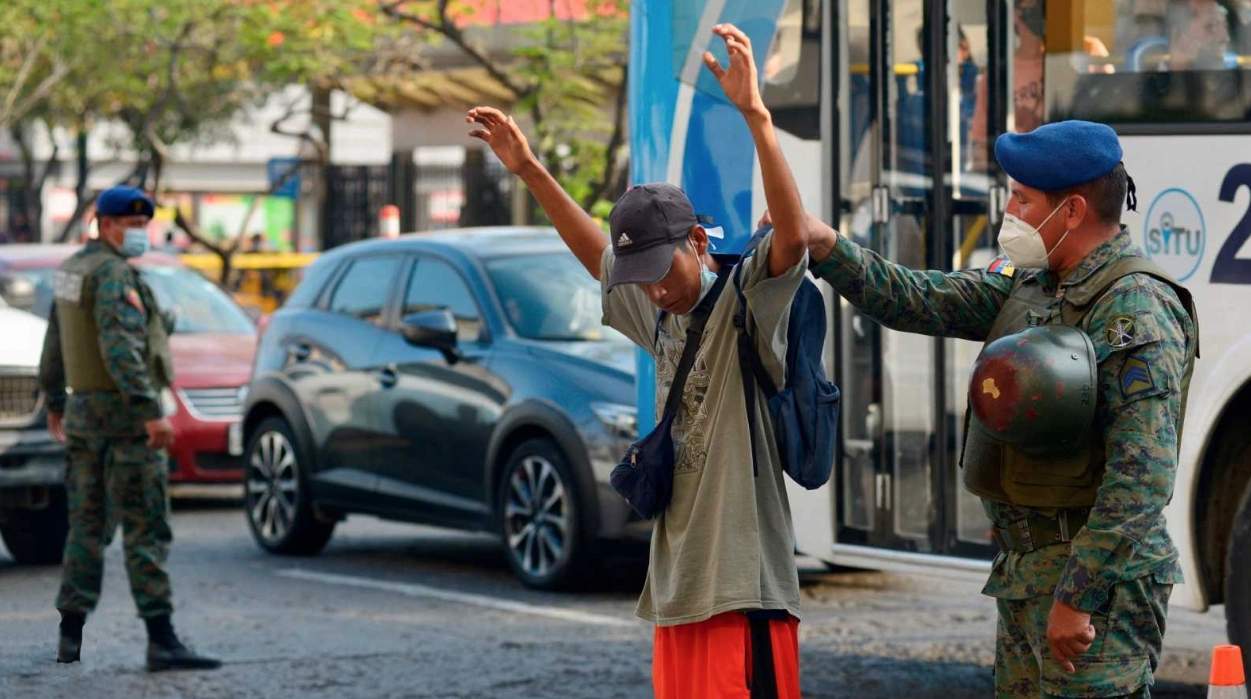In the face of the most recent wave of violence in Ecuador, all schools in four cities of the poorest province, Esmeraldas, closed their doors for several days to 130,000 students last month. In a country with a 28% poverty rate, the educational uncertainty of not counting on the bare minimum –a physical space for teachers to hold lessons– renders the country unlivable for new generations. The government has completely failed children and youth, and actively contributes to increasing generalized violence.
For seven years and without hardly realizing it, Ecuador has been slowly showing all the signs of turning into a “hotspot” of organized crime. An indicator of how wide and deep criminal activity has now reached is the 15,000 pieces of ammunition found last week inside the largest prison in Ecuador, from where shootings and riots in which prisoners are beheaded and their corpses burned have been repeatedly reported for years.
Amidst political assassinations, systematic extortion, kidnappings, shootings in restaurants and hair salons, the ruling class has been able to keep their children within the confines of their gated communities nearby privileged private schools. Meanwhile, violent outbreaks have led for some years to periodic school closures as a last resort to protect students from death, threats and recruitment by gangs. Depriving youth from the fundamental tool of education, however, can actually contribute to the current crisis. Lack of schooling in Ecuador has clear correlations with violence: 11% of the 31,300 total prisoners are as young as 18 to 22 years old while 19% of all prisoners have not completed high school.
Ecuador showed a weak educational response during the Covid-19 pandemic, when national and local authorities and leaders did little to guarantee distance learning, failing to provide students with the technology to connect, and access to the internet. Canceling in-person lessons today means that students will not be able to follow lessons remotely, fall behind once again and, sooner than later, leave school altogether. Facing reduced opportunities, dropouts gravitate towards criminal groups that overlap with or integrate into drug cartels engaging in turf battles, additionally fertilizing conflict.
The levels of gaslighting or incompetence are astounding. Naively – or intentionally, to help dispel criticism against the central government– the Ministry of Education in 2022 launched the Safe Schools Plan. The plan considered providing police surveillance where schools are located. But officers who have not been coopted by criminal groups, they lack high-quality training and resources and are the targets of the unpunished violence controlling some areas of the country, so their hands are tied. It is also not possible to dedicate the police force to guarding schools when there are more pressing needs elsewhere. The effect would be as null as that from another absurd element of the plan highlighted by the Minister of the Interior, Juan Zapata: the launching of festivals for peace and parenting workshops as a measure to reduce the levels of violence.
The symptoms of violence have been ignored for some time, by both government and intergovernmental agencies. In 2017, the Inter-American Development Bank (IADB) celebrated Ecuador’s decrease in the rate of intentional homicides, pointing the legalization of gangs as key to reducing violence through social inclusion. It was the same year when transnational drug trafficking, together with its harmful implications, was beginning to show harmful signs of its expansion in the country. Unsurprisingly, violence in Ecuadorian schools had become so deep and widespread, that colleagues and I found in 2018 that some students preferred to avoid attending classes, regardless of whether they were also exposed to violence within their families. That same year, the Program for International Student Assessment (PISA) found that 37% of students had witnessed at least one violent episode at, or nearby, their school four weeks before they were surveyed. However, official documents blamed the families for school violence, ignoring the connection with wider social conflict. With completion rates of secondary schooling at 72%, unoccupied and unemployed youth were a ticking bomb waiting to explode.
Even if investments commensurate to the urgent needs to restore previous levels of peace in Ecuador where made in the education sector, hopes for schooling to change the future of underprivileged and marginalized are vacuous if the government is unable to combat organized crime. Prisons functioning under the mandate of drug cartels, and calling the shots through coopting and colluding with the military, judiciary and police don’t need to recruit members on school grounds anymore. The educational casualties of criminal warfare will be filling its ranks for years to come.
One of the premises of education is that schools offer opportunities for learning and can promote the well-being of students. Therefore, their closure can only entail the further deepening of Ecuador’s current crisis and have lasting, negative effects on life trajectories for all students, not only for those directly affected by violence.












